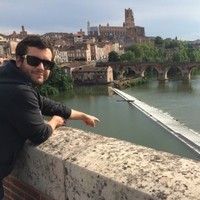Presented at NZ Hydrological Society Technical Workshop 17-20 March 2020
Abstract
The recent report by the Parliamentary Commissioner for the Environment (PCE) into the Environmental Reporting Act (2015) was critical of the state of environmental data collection in New Zealand. Amongst the findings, the PCE recommended that citizen science data collection will have a strong part to play in constructing datasets for locally and regionally important ecosystems, in the process fostering strong links between people and their environment that nationally driven monitoring (e.g. State of the Environment programmes) can struggle to deliver.
The Auckland Council Healthy Waters department develops and operates flood models for stormwater catchment management planning. These project land-use development scenarios, under both current and future design rainfall events. Performance of the models is to understand flooding hazards, floodplain development, building inundation and property damage. Model validation is undertaken through three different processes: sensitivity analysis; validation against available flow/level gauged data for at least three events; or validation against available historic information (flood surveys etc). However, monitored gauge data is sparse in relation to the number of catchments requiring flood model development. Installing monitoring networks to provide that data is costly and requires ongoing council resources to operate and manage.
The capture of STIV data from mobile phone has been successfully demonstrated both locally and internationally (with ±10%). For minimal cost, a surveyed cross section and control points can be laid out at points of interest in otherwise ungauged catchments. The provision of a mobile phone cradle with a field of view that captures the cross section and control points, along with signage designed to engage and inform members of the public as to how to use it, can allow for flood flow data to be captured as citizen science. This data can fill an important role in validating flood models that exist in ungauged catchments.
This talk presents a new project design for citizen science flood flow measurements, including considerations into the data quality collected, the challenges of validating mobile phone data capture, and the potential for better collaboration between local communities and local government in measuring, valuing and making decisions for freshwater catchments.
Author bio

Ed is an experienced field hydrologist and environmental scientist working across public and private sectors. He work has included installing and operating remote monitoring networks, investigating urban freshwater contaminant generation, transport and fate, compliance assessments and project management. His interests lie in novel technology adaptation for monitoring, spanning from the use of drones in water quality monitoring, to the application of IoT networks and nanotechnology in measuring emerging contaminants. This is applied to our urban landscape and the choices we make in infrastructure materials and built form.
Currently, he is working towards his PhD looking at citizen science and community data generation of time-series catchment hydrological information, the use of such data in validating and enhancing institutional models, and how enabling communities to monitoring freshwater systems can enhance connection to environments and sense of place.
Presentation
To watch the video, you will need your AHA member password sent to members by email

